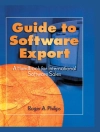Leverage the power of the Shadow DOM API to quickly create encapsulated code that keeps markup and styles separate within websites. Using little more than a text editor or free software, this project-oriented book simplifies the process of creating and manipulating the Shadow DOM API code in the browser for websites or online applications.
You’ll use a starting toolset to develop future projects, incorporate them into an existing workflow, and allow them to simplify complex components. This makes them more robust and less brittle when used in websites. You’ll also see that websites do not have to convert the whole work process immediately; you can incorporate as little or as much as needed of the API, and build on this as your skills develop.
We live in an age where speed and simplicity are of the essence. Beginning Shadow DOM API shows you the perfect way to create encapsulated code that can run in multiple frameworks with a minimum of fuss.
You You’ll Learn
- Implement the Shadow DOM API in a project
- Gain an appreciation of pointers using the Shadow DOM API
- Manage issues and security when using the Shadow DOM API
- Make components and code more reusable, while maintaining desired styling
Who This Book Is For
Website developers who are already familiar with frameworks that Shadow DOM API, but do not want to have to use the heavy weight of a full-sized framework to add features such as DOM encapsulation to their code.
表中的内容
1.Getting Started.- 2. Creating Components.- 3. Applying Shadow DOM API in Apps.- 4. Supporting other Frameworks.
关于作者
Alex Libby is a frontend developer and seasoned computer book author, who hails from England. His passion for all things open-source dates back to his student days, when he first came across web development, and has been hooked ever since. His daily work involves extensive use of Java Script, HTML, and CSS to manipulate existing website content; Alex enjoys tinkering with different open-source libraries to see how they work. He has spent a stint maintaining the j Query Tools library, and enjoys writing about open-source technologies, principally for front-end UI development.












